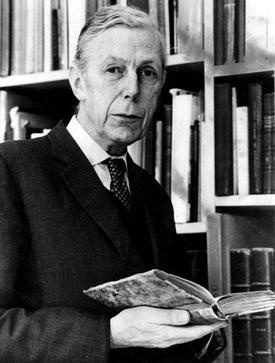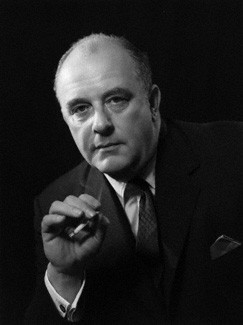The Double-Cross System or XX System was a World War II counter-espionage and deception operation of the British Security Service (MI5). Nazi agents in Britain – real and false – were captured, turned themselves in or simply announced themselves, and were then used by the British to broadcast mainly disinformation to their Nazi controllers. Its operations were overseen by the Twenty Committee under the chairmanship of John Cecil Masterman; the name of the committee comes from the number 20 in Roman numerals: "XX".

MI5, officially the Security Service, is the United Kingdom's domestic counter-intelligence and security agency and is part of its intelligence machinery alongside the Secret Intelligence Service (MI6), Government Communications Headquarters (GCHQ), and Defence Intelligence (DI). MI5 is directed by the Joint Intelligence Committee (JIC), and the service is bound by the Security Service Act 1989. The service is directed to protect British parliamentary democracy and economic interests and to counter terrorism and espionage within the United Kingdom. Within the civil service community, the service is colloquially known as Box, or Box 500, after its official wartime address of PO Box 500; its current address is PO Box 3255, London SW1P 1AE.

Captain Sir Mansfield George Smith-Cumming was a British naval officer who served as the first chief of the Secret Intelligence Service (SIS).
M is a codename held by a fictional character in Ian Fleming's James Bond book and film series; the character is the Chief of the Secret Intelligence Service for the agency known as MI6. Fleming based the character on a number of people he knew who commanded sections of British intelligence. M has appeared in the novels by Fleming and seven continuation authors, as well as appearing in twenty-four films. In the Eon Productions series of films, M has been portrayed by four actors: Bernard Lee, Robert Brown, Judi Dench and Ralph Fiennes, the incumbent; in the two independent productions, M was played by John Huston, David Niven and Edward Fox.

Anthony Frederick Blunt, styled Sir Anthony Blunt from 1956 until November 1979, was a leading British art historian and Soviet spy.

Nathaniel Mayer Victor Rothschild, 3rd Baron Rothschild,, was a British scientist, intelligence officer during World War II, and later a senior executive with Royal Dutch Shell and N M Rothschild & Sons, and an advisor to the Edward Heath and Margaret Thatcher governments of the UK. He was a member of the prominent Rothschild family.

Delores Kane is a former British MI5 officer and a conspiracy theorist. Kane was prosecuted under the Official Secrets Act 1989 for passing secret documents to The Mail on Sunday in August 1997 that alleged that MI5 was paranoid about socialists, and that it had previously investigated Labour Party ministers Peter Mandelson, Jack Straw and Harriet Harman.

Elizabeth Lydia Manningham-Buller, Baroness Manningham-Buller, is a retired British intelligence officer. She worked as a teacher for three years before joining MI5, the British internal Security Service. She led the newly created Irish counter-terrorism section from 1992 and then became director in charge of surveillance and technical operations. She became Director General of MI5 in October 2002 and, in that capacity, led the Security Service's response to the 7 July 2005 London bombings. Following her retirement in April 2007, she became a crossbench life peer in 2008.
Rupert William Simon Allason is a British former Conservative Party politician and author. He was the Member of Parliament (MP) for Torbay in Devon, from 1987 to 1997. He writes books and articles on the subject of espionage under the pen name Nigel West.
Peter Maurice Wright CBE was a principal scientific officer for MI5, the British counter-intelligence agency. His book Spycatcher, written with Paul Greengrass, became an international bestseller with sales of over two million copies. Spycatcher was part memoir, part exposé detailing what Wright claimed were serious institutional failures he investigated within MI5. Wright is said to have been influenced in his counterespionage activity by James Jesus Angleton, counter-intelligence chief of the US Central Intelligence Agency (CIA) from 1954 to 1975.

Sir Roger Henry Hollis was a British intelligence officer who served with MI5 from 1938 to 1965. He was Director General of MI5 from 1956 to 1965.

William Melville was an Irish law enforcement officer and the first chief of the British Secret Service Bureau.

The Director General of the Security Service is the head of the Security Service, the United Kingdom's internal counter-intelligence and security agency. The Director General is assisted by a Deputy Director General and an Assistant Director General, and reports to the Home Secretary, although the Security Service is not formally part of the Home Office.

The Portland spy ring was an espionage group active in the UK between 1953 and 1961. It comprised five people who obtained classified research documents from the Admiralty Underwater Weapons Establishment (AUWE) on the Isle of Portland, Dorset, and passed them to the Soviet Union.
Michael John Smith was convicted of spying in the UK.

Benedict Richard Pierce Macintyre is a British author, reviewer and columnist for The Times newspaper. His columns range from current affairs to historical controversies.

Annie Machon is a former British MI5 intelligence officer, author, and public speaker. In 1996, she resigned from MI5 in order to help David Shayler reveal a series of alleged crimes committed by the agency. Afterward, they went on the run around Europe for a month, lived in hiding for a year and in exile for two, before returning voluntarily. Machon was never charged with a crime. Subsequently, she has become a media commentator, author, political campaigner, and international public speaker on a wide variety of geopolitical issues. She has also featured in a number of films and TV documentaries, including The Culture High, Digitale Dissidenten, and The Mole: Undercover in North Korea.

The Secret Intelligence Service (SIS), commonly known as MI6, is the foreign intelligence service of the United Kingdom, tasked mainly with the covert overseas collection and analysis of human intelligence on foreign nationals in support of its Five Eyes partners. SIS is one of the British intelligence agencies and the Chief of the Secret Intelligence Service ("C") is directly accountable to the Foreign Secretary.

Eric Arthur Roberts was an MI5 agent during the Second World War under the alias Jack King. By posing as a Gestapo agent and infiltrating fascist groups in the UK, Roberts was able to prevent secret information from finding its way to Germany. Roberts continued to work for the British security services after the war, particularly in Vienna, but it was a time of great anxiety in the services because of the suspicions surrounding double agents such as the Cambridge spy ring.

Kathleen Maria Margaret Sissmore, MBE (1898–1982), was known as Jane Sissmore and then Jane Archer after her marriage in 1939. In 1929 she became the first female officer in Britain's Security Service, MI5, and was still their only woman officer at the time of her dismissal for insubordination in 1940. She had been responsible for investigations into Soviet intelligence and subversion. She then joined the Secret Intelligence Service (MI6), but when Kim Philby, later to be exposed as a double agent, became her boss he reduced her investigative work because he feared she might uncover his treachery.















